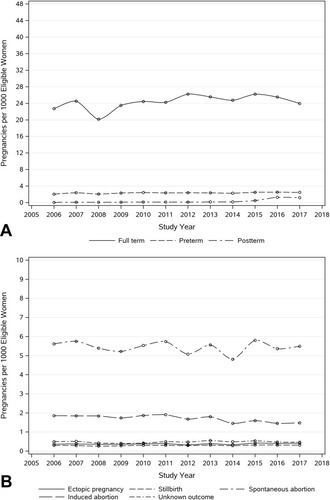Figures & data
Table 1 Pregnancy Episodes Identified by the Pregnancy Identification Algorithm (PIA)
Figure 1 Secular trend of pregnancies among women of child-bearing age stratified by live, mixed, and unclassified deliveries (A) and non-live outcomes (B).

Figure 2 Distribution of gestational age assigned to all liveborn (A), preterm (B), full-term (C), and postterm deliveries (D) pregnancy episodes.

Table 2 Proportion of Pregnancy Episodes with Prenatal Screening Procedure Codes During Pregnancya
Table 3 Median Gestational Age for Prenatal Screening Procedures During Pregnancya
